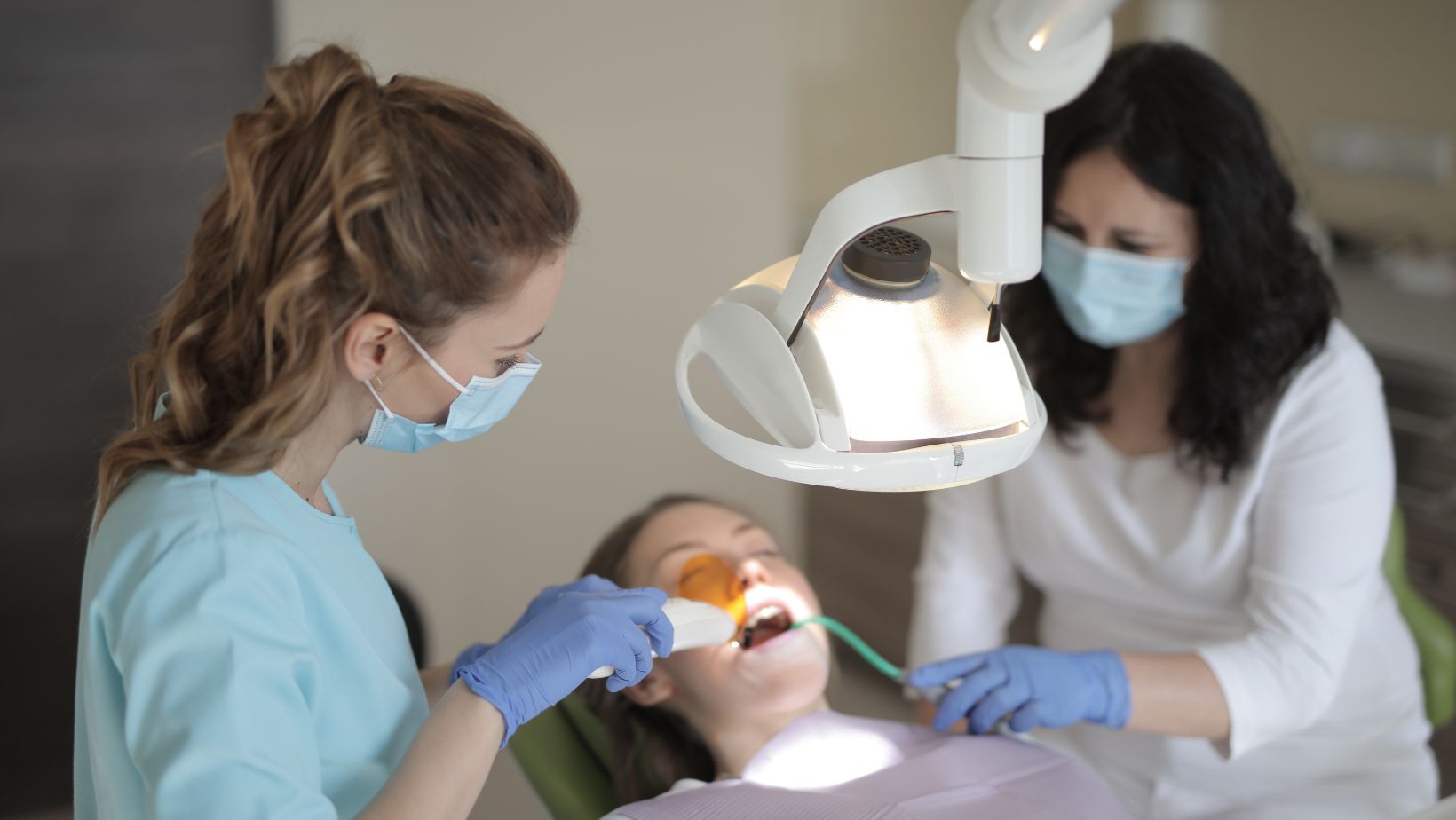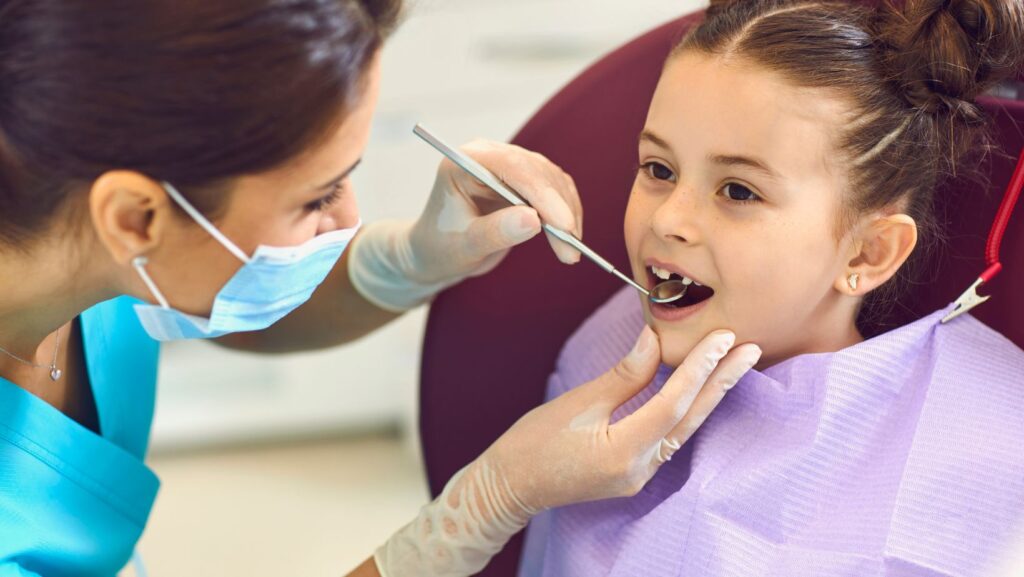As parents, we strive to protect our children from harm, but accidents can happen, and dental emergencies are no exception. A sudden toothache, a knocked-out tooth, or a cut in the mouth can be frightening for both child and parent. Knowing how to react quickly and effectively in these situations can make a significant difference in the outcome and help minimise distress. This comprehensive guide outlines the common types of dental emergencies children may experience and provides step-by-step advice on what parents should do to ensure their child receives the best possible care, sometimes it’s necessary to visit a professional like Dorking Dental Centre for medical treatment.
Understanding What Constitutes a Dental Emergency in Children
It’s crucial to differentiate between urgent dental issues and situations that can wait for a regular appointment. A dental emergency in a child typically involves:
- Severe Pain: Unrelenting toothache, especially if accompanied by swelling or fever.
- Bleeding: Bleeding from the mouth that doesn’t stop with gentle pressure.
- Knocked-Out Tooth: A tooth that has been completely dislodged from the socket.
- Displaced or Loose Tooth: A tooth that has been pushed out of alignment or is significantly loose due to injury.
- Fractured or Broken Tooth: A tooth that has been cracked or broken, especially if it involves the nerve.
- Object Stuck in Teeth That Cannot Be Removed: When a foreign object is lodged between teeth and cannot be dislodged with gentle flossing.
- Severe Infection or Swelling: Swelling in the face, gums, or mouth, often accompanied by pain and potentially a fever.
- Significant Trauma to the Mouth or Face: Injuries to the lips, gums, tongue, or jaw that may involve teeth.
Immediate Actions: Staying Calm and Assessing the Situation
The first and most important step for parents is to remain calm. Your child will likely be distressed, and your composed demeanour will help reassure them. Quickly assess the situation to determine the nature and severity of the injury.
- Stay Calm: Your child will mirror your reaction. Take a deep breath and speak in a reassuring tone.

- Assess the Injury: Carefully examine your child’s mouth to identify the specific problem. Note the location, extent of bleeding, and any visible damage.
- Gather Information: Ask your child what happened, if they can articulate it. This information can be helpful for the dental professional.
- Do Not Panic: While dental emergencies can be alarming, most can be effectively managed with prompt and appropriate action.
Specific Emergency Scenarios and How to Respond:
Here’s a breakdown of common childhood dental emergencies and the immediate steps parents should take:
- Knocked-Out Tooth: This is a time-sensitive emergency where swift action can significantly increase the chances of saving the tooth.
- Find the Tooth: Handle the tooth by the crown (the white part), avoiding touching the root.
- Rinse Gently: If the tooth is dirty, rinse it gently with milk or saline solution (if available). Do not scrub it. Tap water can be used if nothing else is available, but milk or saline is preferable as they are less likely to damage the root surface cells.
- Replant If Possible: If your child is conscious and cooperative, try to gently place the tooth back into its socket, ensuring it’s facing the correct way. Encourage them to bite down gently on a clean cloth or gauze to hold it in place.
- Keep Moist If Replanting Isn’t Possible: If you cannot replant the tooth, place it in a container of milk, saline solution, or your child’s saliva to keep it moist.
- Seek Immediate Dental Care: Go to the nearest emergency dental service as quickly as possible. The sooner the tooth is replanted (ideally within 30 minutes to an hour), the higher the chance of successful reattachment.
- Displaced or Loose Tooth: A tooth that has been pushed out of alignment or is significantly loose needs prompt attention.
- Do Not Try to Force Back into Place: Avoid trying to reposition the tooth yourself, as this could cause further damage.
- Gentle Pressure: If there is bleeding, apply gentle pressure with a clean cloth or gauze.
- Stabilise (If Possible): If the loose tooth is causing significant discomfort or is at risk of falling out, try to gently stabilise it by having your child avoid touching or wiggling it.
- Seek Prompt Dental Care: Schedule an emergency dental appointment as soon as possible. The dentist will assess the damage and determine the best course of action to stabilise or reposition the tooth.
- Fractured or Broken Tooth: A cracked or broken tooth can be painful and may expose the nerve.
- Rinse the Mouth: Gently rinse your child’s mouth with warm water.
- Apply a Cold Compress: Apply a cold compress to the outside of the cheek to reduce swelling.
- Save Any Broken Fragments: If possible, collect any broken pieces of the tooth and bring them to the dentist.
- Seek Prompt Dental Care: Schedule an emergency dental appointment. The dentist will assess the fracture and determine the appropriate treatment, which may involve bonding, a filling, or a crown.
- Object Stuck in Teeth: If a foreign object is lodged between your child’s teeth and you cannot remove it with gentle flossing, avoid using sharp or pointed instruments.
- Do Not Use Force: Forcing the object could cause injury to the gums or teeth.
- Seek Dental Assistance: Schedule a dental appointment as soon as possible to have the object safely removed.
- Severe Toothache: A severe toothache can indicate a serious underlying issue, such as an infection or abscess.
- Rinse the Mouth: Rinse your child’s mouth with warm water.
- Gentle Flossing: Gently floss around the sore tooth to remove any trapped food particles.

- Cold Compress: Apply a cold compress to the outside of the cheek to reduce swelling.
- Over-the-Counter Pain Relief: Administer age-appropriate over-the-counter pain medication, such as paracetamol or ibuprofen, following the dosage instructions.
- Seek Prompt Dental Care: Schedule an emergency dental appointment to diagnose and treat the cause of the severe pain.
- Severe Infection or Swelling: Swelling in the face, gums, or mouth, especially if accompanied by pain, fever, or difficulty swallowing, is a serious sign of infection.
- Do Not Delay: Seek immediate dental or medical attention. A severe infection can spread quickly and have serious consequences.
- Warm Compress (May Be Recommended): In some cases, a warm compress applied to the outside of the affected area might help to draw out infection, but follow the advice of a healthcare professional.
- Significant Trauma to the Mouth or Face: Injuries to the mouth or face that involve bleeding or potential damage to teeth or the jaw require prompt assessment
- Control Bleeding: Apply gentle but firm pressure to any bleeding areas with a clean cloth or gauze.
- Cold Compress: Apply a cold compress to reduce swelling.
- Seek Immediate Dental or Medical Care: Depending on the severity of the trauma, you may need to go to an emergency dental clinic or a hospital emergency room.
Preparing for the Emergency Dental Visit:
Once you’ve taken immediate action, prepare for the dental visit:
- Bring Relevant Information: If possible, bring any relevant medical history for your child, including allergies and medications.
- Bring the Knocked-Out Tooth or Fragments: If a tooth has been knocked out or broken, bring the tooth or any fragments with you, kept moist.
- Be Prepared to Explain What Happened: Be ready to describe the incident and your child’s symptoms to the dental professional.
- Follow Instructions Carefully: Listen carefully to the dentist’s instructions for immediate care and follow-up treatment.
Prevention is Key: Reducing the Risk of Dental Emergencies
While not all emergencies are preventable, there are steps parents can take to minimise the risk:
- Encourage Good Oral Hygiene: Teach your child to brush twice a day and floss daily.
- Regular Dental Check-ups: Schedule regular dental appointments for check-ups and cleanings.
- Mouthguards for Sports: If your child participates in contact sports, ensure they wear a properly fitted mouthguard.
- Avoid Hard and Sticky Foods: Limit consumption of very hard or sticky foods that can chip or pull out teeth or fillings.
- Childproof Your Home: Take precautions to prevent falls and other accidents that could lead to dental injuries.
Conclusion: Acting Swiftly and Seeking Professional Help
Childhood dental emergencies can be distressing, but by staying calm, assessing the situation quickly, and taking the appropriate immediate steps, parents can significantly improve the outcome. Knowing when to seek emergency dental care and what to do in the interim is crucial for protecting your child’s oral health. Remember that prompt professional attention is always recommended for any significant dental injury or severe pain. By being prepared and knowing how to react, you can navigate these unexpected situations with confidence and ensure your child receives the best possible care.
